About
WOKA

The Journey of the Waters of Oklahoma and Arkansas (WOKA) Began with a Visionary Dream

1926
Inspired by the beauty all along the Illinois River and the surrounding region, Tulsa businessman Jay K. Livingston and other partners purchase 1,200 acres along the river with plans to develop a resort area, to be named Forest Park.
Guest relax in front of the Forest Park Cafe, soon after the resort area opens, circa late 1920s. Owners intended for the resort to be a weekend getaway, especially for wealthy Tulsa oilmen and their families.


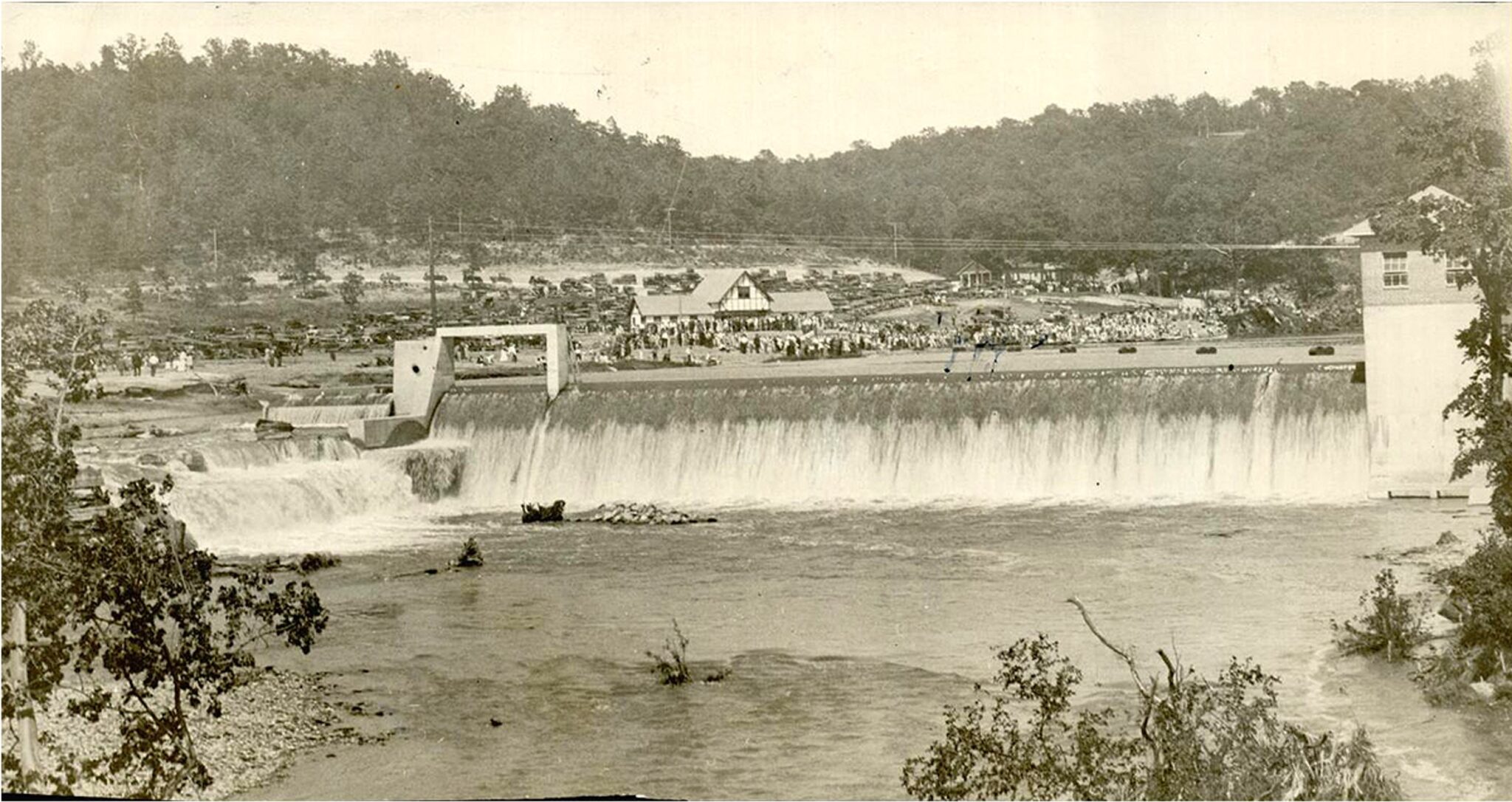
1927
James Wallace Sloan acquires controlling interest of the resort area and, soon after, construction begins on a dam across the Illinois River, to create a 70-acre lake.
A photo of “opening day” at Lake Frances, shortly after the dam’s completion. Sloan names the lake in honor of one of his daughters.

1931
Along with the 70-acre Lake Frances for fishing, sailing, and swimming, the area also features a large hotel, tennis courts, golf course, ballroom dancing, hiking trails, and an extra-large ballroom. Sloan opens the resort to locals who soon become frequent guests.
The Lake Frances Hotel featured 60 guest rooms. Additionally, the area also featured cabins available for rent or purchase, as well as lots available for purchase for those who wanted to build their own cabin.
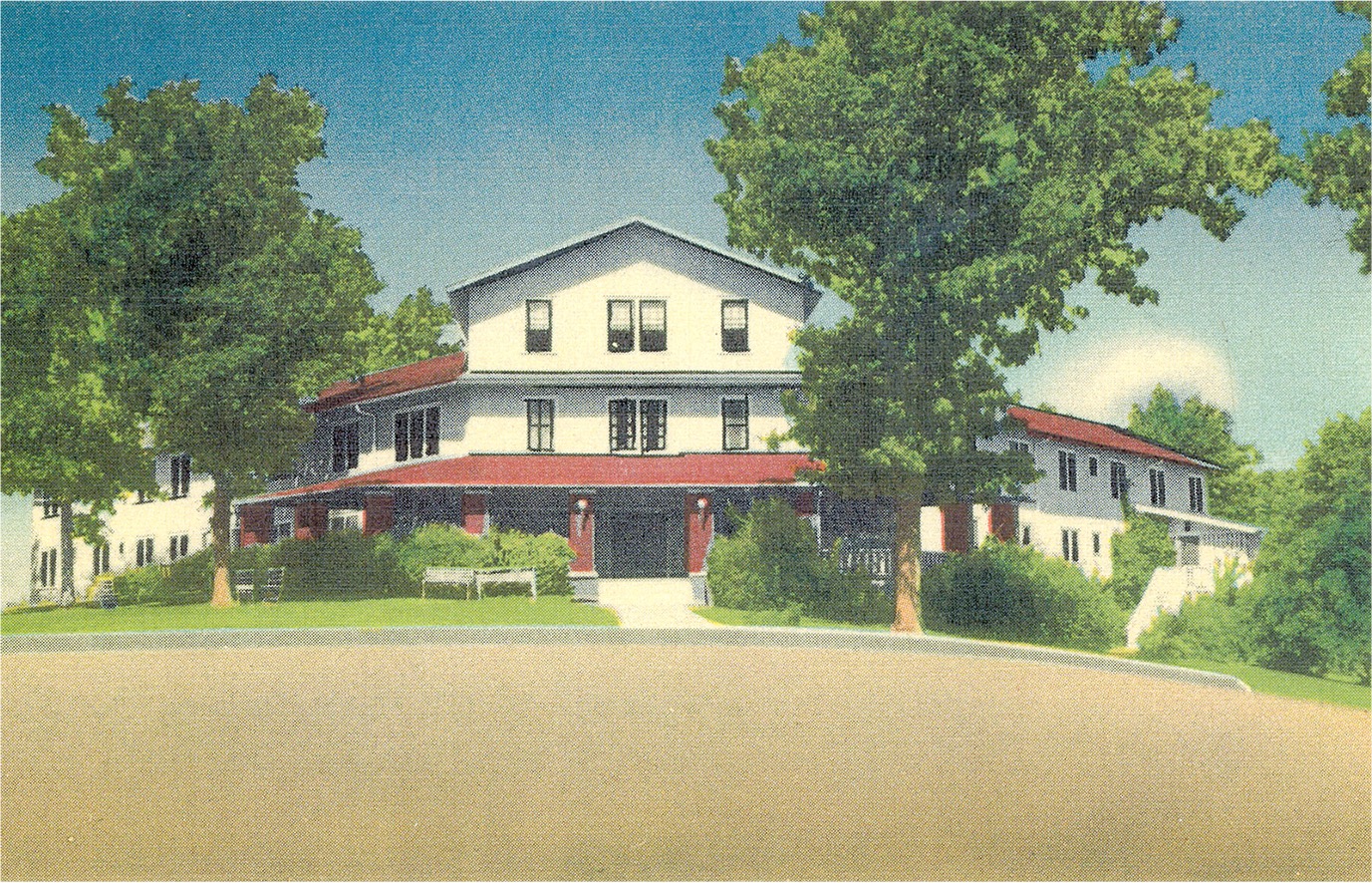

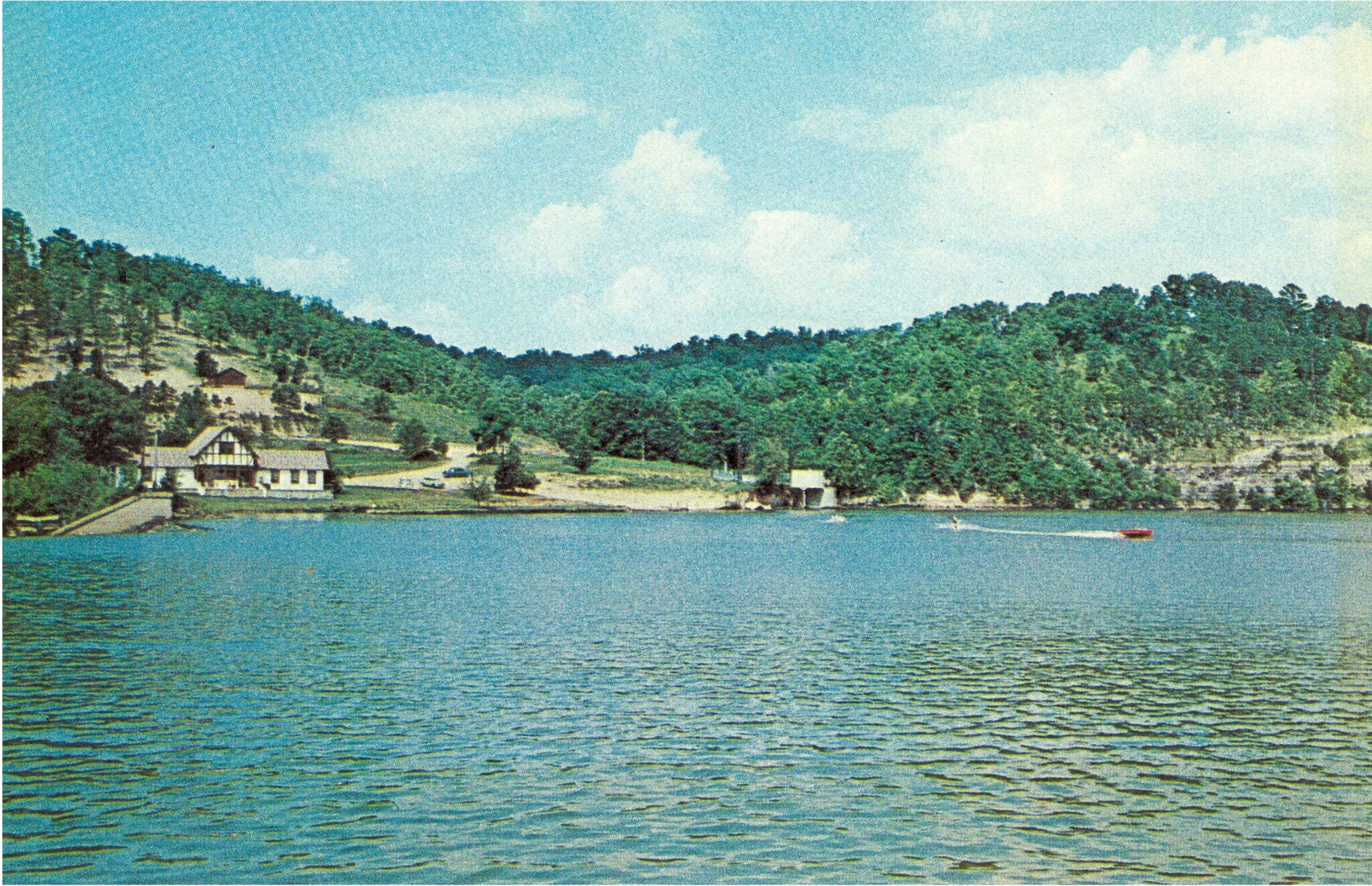
Late 1930s
Unfortunately, the dam soon begins to show signs of wear and is damaged. In response, Sloan hires Caldeen Gunter II to make repairs. A descendant of the family founded the Hico settlement (later named Siloam Springs, Gunter soon gets to work on the project, but financial strains brought on by the Great Depression do not allow him to finish. Between the Great Depression, the damage to the dam and World War II, the popularity of Lake Frances begins to fade.
A ski boat makes its way across the waters of Lake Frances during its heyday, sometime before the damage to the dam and the Great Depression begin to take it’s toll on the resort.

1954
The City of Siloam Springs, Arkansas, purchases Lakes Frances to serve as a water resource and as a recreational area, once the dam is fully repaired.
A postcard rendering of the Lake Frances spillway.
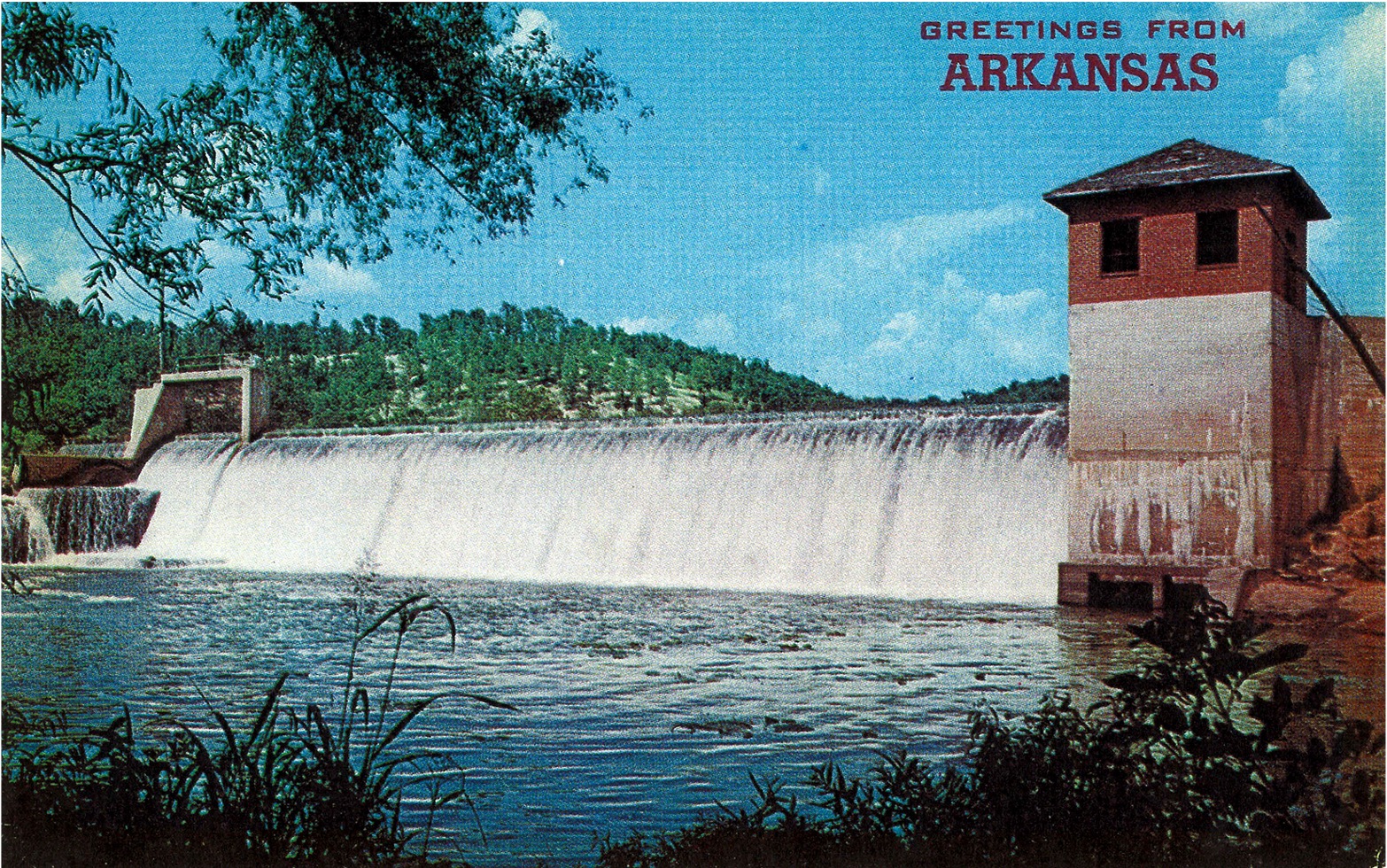

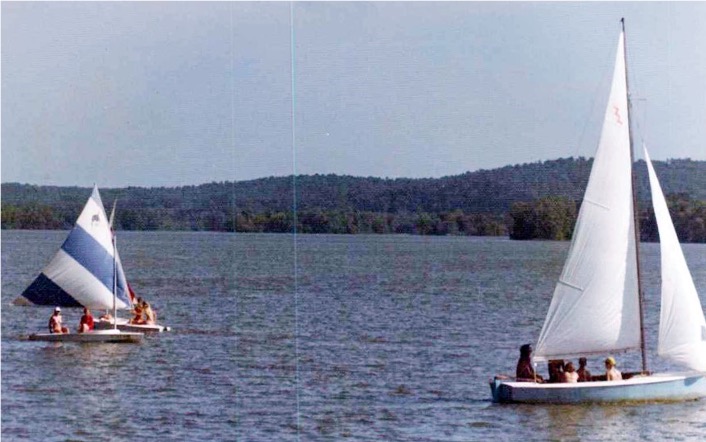
1960s - 80s
Although the splendor of the Forest Park resort is gone, and the hotel is torn down in 1971, the area is still used by outdoor enthusiasts for swimming and fishing. Summer camps are also popular across the resort property.
Sailing enthusiasts enjoying the waters of Lake Frances in the 1970s.

1989-1990
In order to prevent a catastrophic dam break – which could have caused much damage down river – Lake Frances is drained. In the years immediately following, private citizens begin to purchase the surrounding lands that were once part of the resort area.
The Illinois River flows the remains of a spillway that once stood much taller. Trees have since filled in the former Lake Frances bed, in the upper right of the photo.


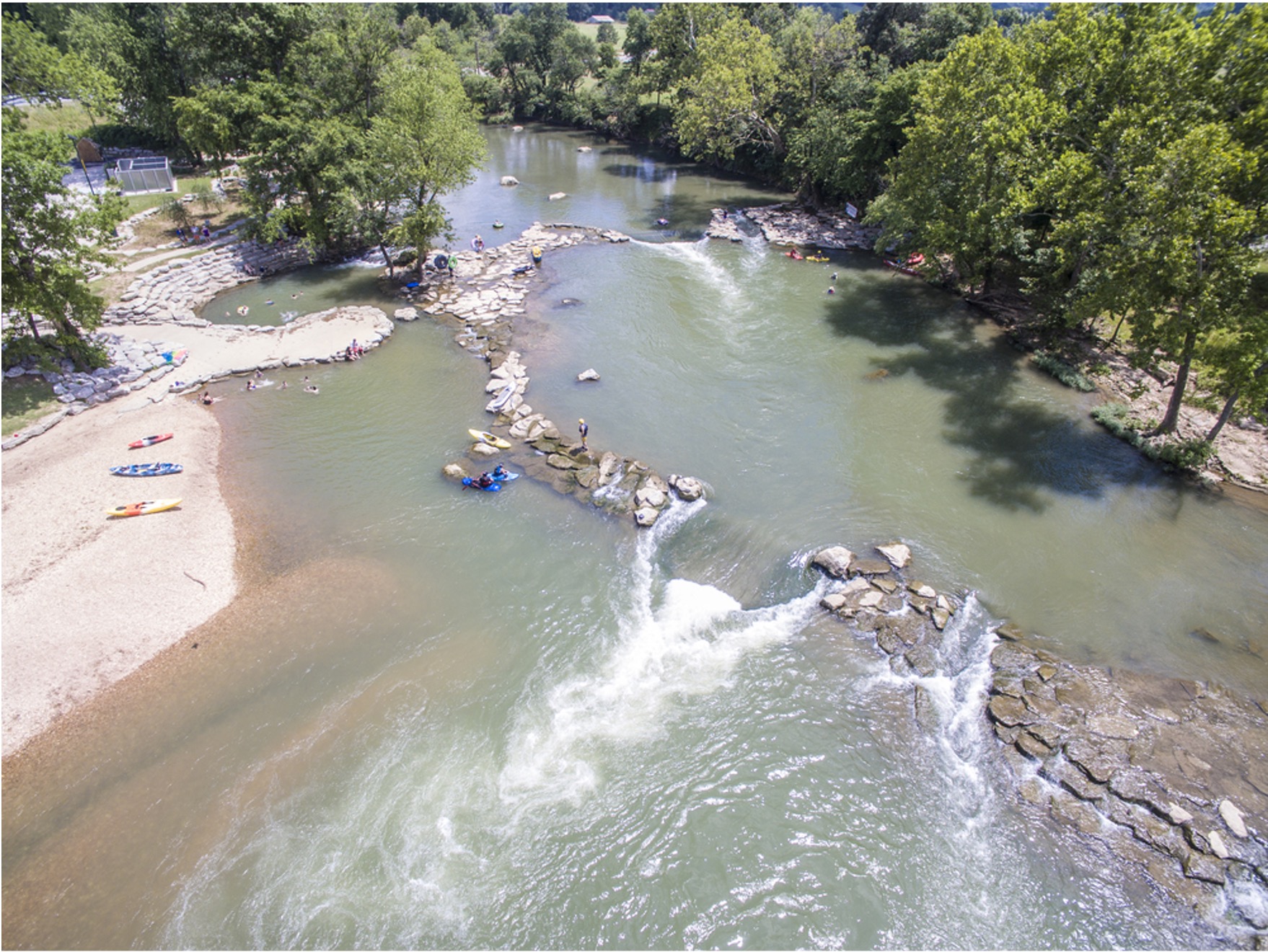
2014
The Siloam Springs Kayak Park is developed along the Illinois River at Fisher Ford, just a few miles upriver from Lake Frances. The land where the park is located was gifted to the City of Siloam Springs by the Walton Family Foundation, which also paid for the park’s development. Soon after, discussions begin about adding a similar park at Lake Frances.
An aerial view of the Siloam Springs Kayak Park, which opened in 2014.

2016
The Grand River Dam Authority (GRDA) absorbs the Oklahoma Scenic Rivers Commission (OSRC). First established in 1977, the OSRC had stewardship responsibility over several scenic river areas in Oklahoma, including the Illinois River. GRDA carries on that stewardship mission today.
A GRDA Police Officer patrols the waters of the Scenic Illinois River.



2018
The Walton Family Foundation provides both funding and over 55 acres to begin the development process for a new whitewater park at the former Lake Frances site. The City of Siloam Springs deeds over seven acres to GRDA, which begins working with McLaughlin Whitewater Group and division of Merrick & Company to create a plan for the new park. In October, Crossland Construction Company is chosen to build the facility.
An early conceptual drawing for what would become WOKA Whitewater Park.

2020
Construction begins on the WOKA Whitewater Park in October. By the end of the year, a portion of the excavation and blasting is completed, the park begins to take shape.
This photo, taken early in the construction project, shows crews at work on the whitewater course.
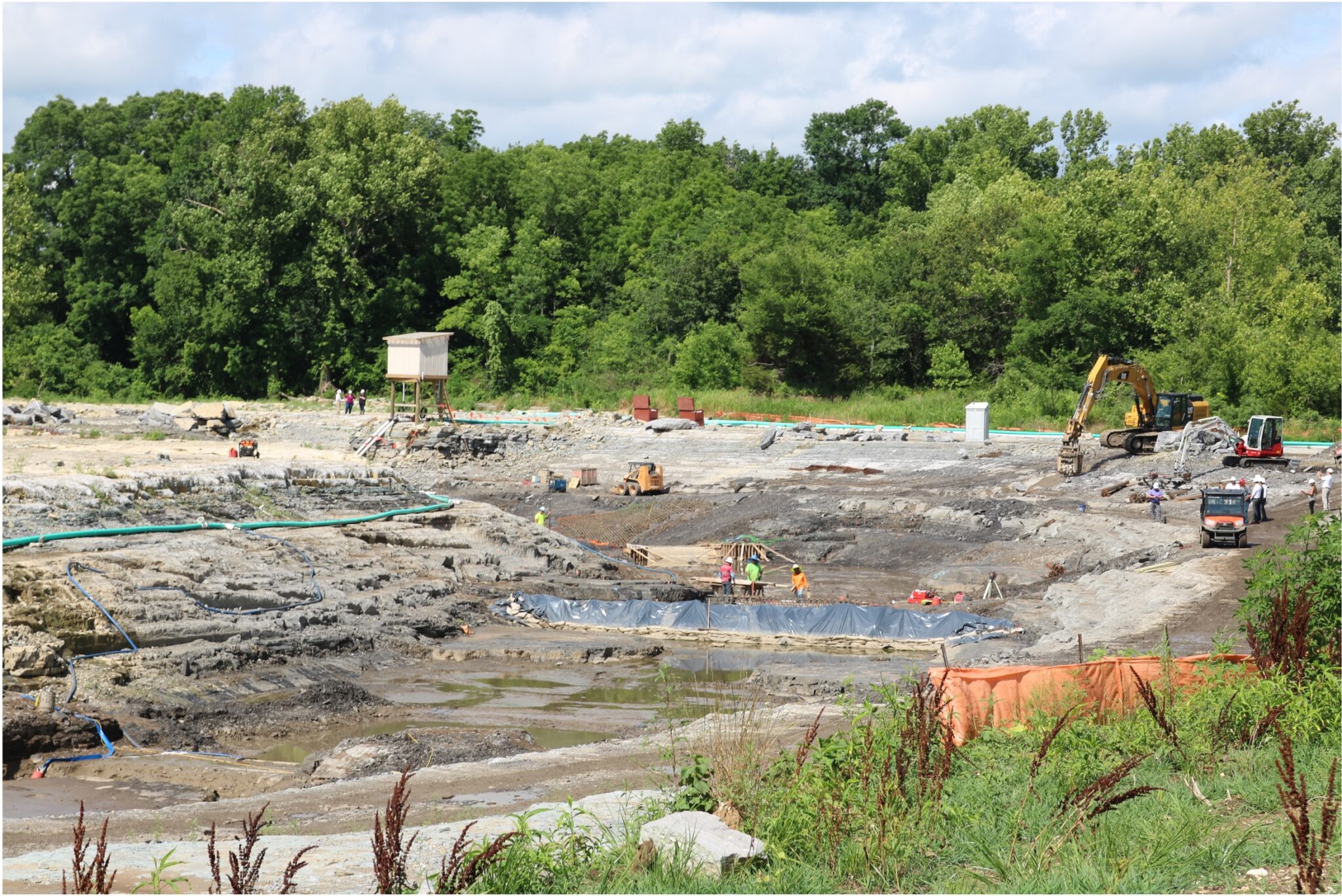


2022
The course is complete, and the Illinois River is running through. The dam mitigation stair-step process is also started to provide safer water conditions below the old Lake Frances dam and to ensure its structural integrity for generations to come. Even with WOKA completed, the area remains as an important water source for Siloam Springs.
In August 2022, crews performed a successful bulkhead gate installation test at WOKA. The gates would be used in times of extremely low water conditions on the Illinois River, to ensure that Siloam Springs had an ongoing, adequate pool of water to feed their pumps.

2023
In August, WOKA Whitewater Park is completed to open to the public.
World Champion Kayaker Nick Troutman testing the WOKA course in June 2023, not long before the park opened to the public.
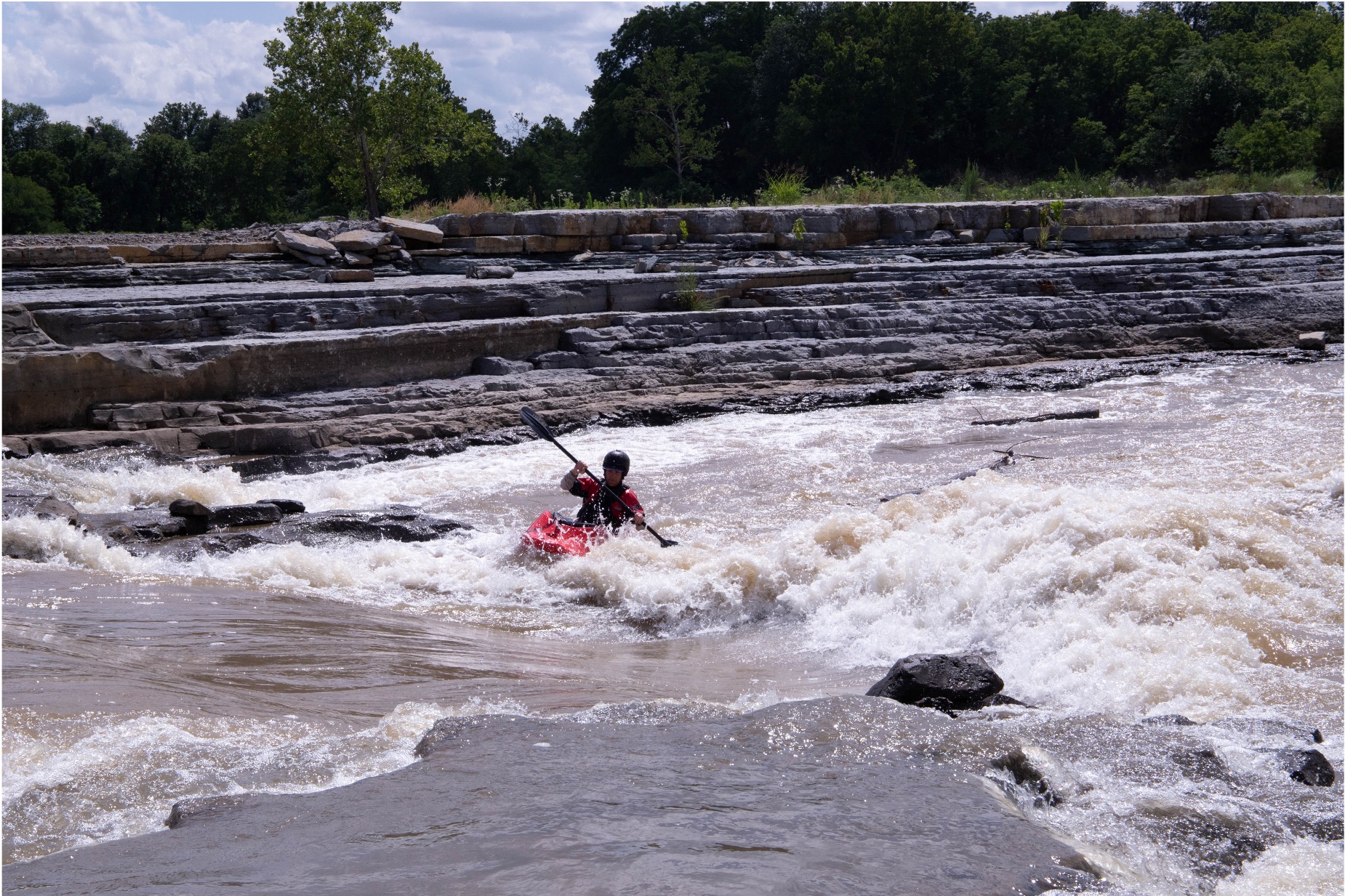
The vision of WOKA began in 2011 in a conversation between Ed Fite (Water Quality Manager) and David Cameron (former city administrator) and M.L. Van Poucke, long-term serving mayor for Siloam Springs, Arkansas. Their city-owned and operated Lake Frances, an impoundment built in the upper reach of the Illinois River in Oklahoma, was originally a lake approximately 700 surface acres in size and used as the city’s raw water supply. In May 1990, a portion of the main spillway area failed during a flood event. Some 21 years after the breach, David and Moose mentioned that the city was partnering with the Walton Family Foundation to build a small “two drop” whitewater park at the Fisher Ford area on the Illinois River, approximately seven miles upstream of Lake Frances, in Arkansas.
Ed Fite later contacted David Cameron to suggest a similar project immediately adjacent to the Lake Frances Dam, building a whitewater course around that structure. Approximately six months later, David revealed that Foundation officials were contemplating the concept, sparking a sequence of discussions, a design charrette organized by the University of Arkansas, and ongoing meetings.
The former Oklahoma Scenic Rivers Commission carried much of the water on the run-up to WOKA coming to fruition. When the Commission was consolidated by an Act of the Oklahoma State Legislature (effective July 1, 2016) into the Grand River Dam Authority, the WOKA Project began to solidify. Ed continued to be involved in scoping the project through formal planning, Section 404 CWA permits, selection of design-build contractors, and securing the funding.
The principles who are to be credited for pulling the project together are Holly Moore, Director of GRDA properties; Richard “Jared” Skaggs, Director of GRDA Outdoor Recreational Experiences; Laura Hunter, Executive Vice-President of GRDA Shared Services; and, Mike Brown, Special Projects Director. These four individuals have been responsible for shepherding WOKA to its reality. Their work has been supported by hundreds of groups, agencies, tribal organizations, and individuals who share their commitment and passion.
The Walton Family Foundation have made a generous, quality-of-life investment that will benefit future generations residing in, working in, and recreating the Illinois River Basin.

